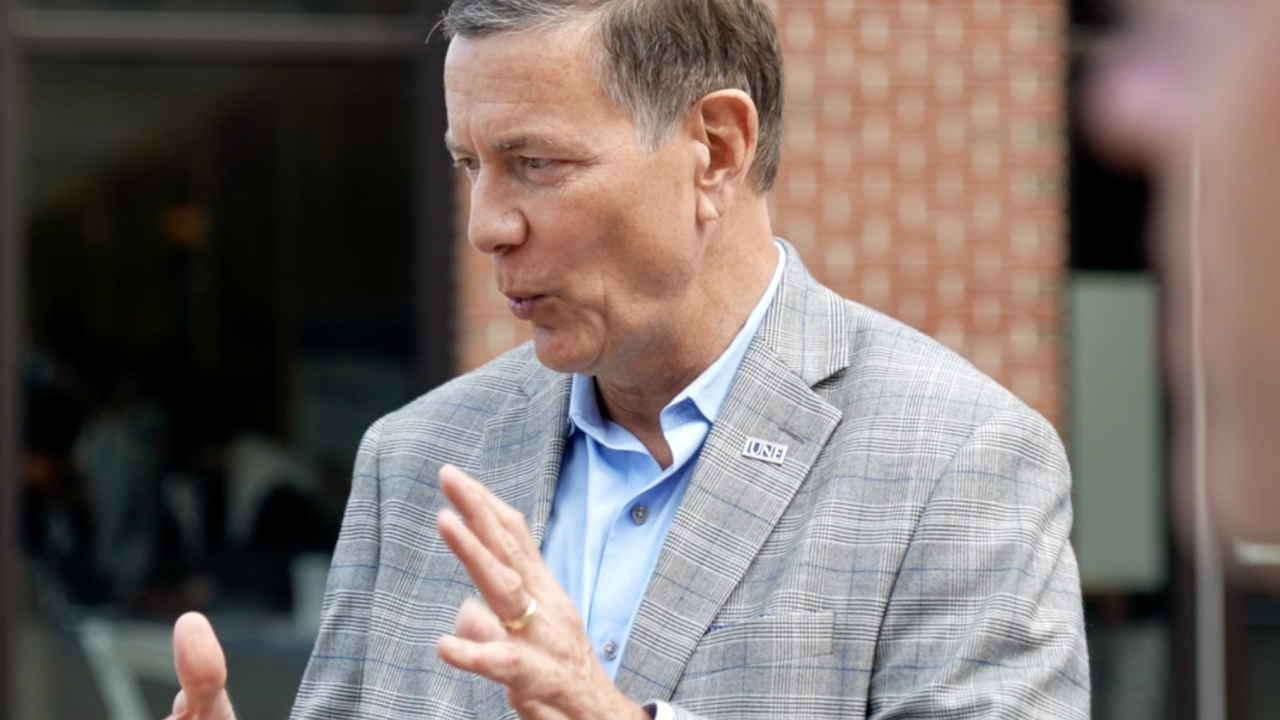BIDDEFORD, Maine — Students are returning to campuses as colleges reopen their doors. About one in four U.S. schools require those students to get vaccinated for COVID-19, following guidelines from the American College Health Association.
"American College Health Association believes that the best protection, the best way to bring our faculty, staff and students back safely, is to have a fully vaccinated campus," said Dr. Sarah Van Orman.
She helped create the COVID-19 protocols in use around the country.
"I think for most of us, it's about balancing a return to normal, and how do we do those safely? What mitigation systems do we need to have in place?" said Van Orman.
Vaccine mandates are working at the University of New England (UNE). The picturesque campus is home to nearly 4,000 students and 1,100 staff members.
For the university's president, James Herbert, it’s several thousand people he’s responsible for keeping safe from COVID-19.
“It’s been quite the roller coaster the past 18 months, a lot of ups and downs. But we’ve actually weathered the pandemic quite well overall,” said Herbert
He’s hoping the roller coaster ride, at least on campus, may be slowing down.
“Now, we’ve gotten to the point where we’re over 98% of our community is vaccinated and with just a handful of exemptions,” said Herbert.
It’s not just UNE. About 94% of students living on campus in the University of Maine system are vaccinated. Multiple other colleges in Maine are reporting near 100% vaccination rates as well.
The number is substantially higher than the overall rate for 18 to 24-year-olds in the U.S. Only 43.5% have received the vaccine.
Herbert says vaccine requirements are a driving force. A total of 34 of Maine’s 37 universities require students to get the shot.
“The majority of the students responded very well. They understood why we needed to have the vaccine,” said Herbert.
For medical school students Julia Marcus and Molly Cherny, it made the decision to come to school that much easier.
“I thought it was awesome that UNECOM or UNE, in general, was mandating vaccines just for the safety of all the students and all the faculty,” said Marcus
“I’m sure there was an exemption or two but for the most part, we never even questioned it in the past to have a hepatitis or a menegitis or measles, mumps and rubella vaccine, so it kind of was like I said, just another box for me to check off,” said Cherney.
But while schools with mandates have generally reported high vaccination rates, it's a mixed bag for the 3,000-plus schools that do not have a mandate in place. Many do not publicly report their vaccination rates.
"When we think about the vaccine rates at an institution, we have to understand where does that institution sit. What are the overall vaccine rates in the community," said Van Orman.
The University of Alabama system, with no vaccine requirement, is reporting a vaccination rate of around 58%.
But the University of Wisconsin, which also decided against a mandate, has vaccinated more than 90% of students.
"I think it's a good example of what you see when you have that strong vaccine infrastructure, and a community acceptance and awareness of the vaccine, versus a state where we have a longer way to go," said Van Orman.
Herbert has faced doubters on his campus. He says his team has responded with compassion.
“What we tried to do is meet people where they were at rather than hit them over the head with a bunch of facts and figures to listen to what their concerns were and to try and meet them where they were at,” said Herbert. “This is, right now, one of the safest places on planet earth that you could be in is our campus when we have almost 99% of the community vaccinated.”



